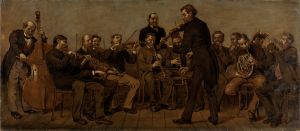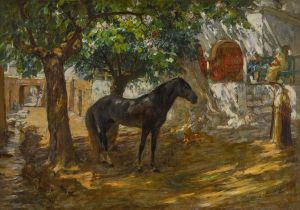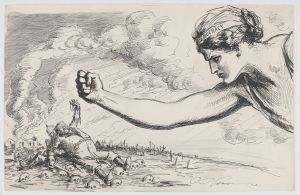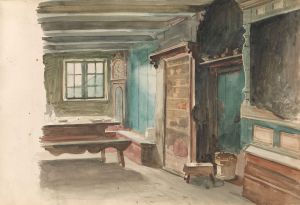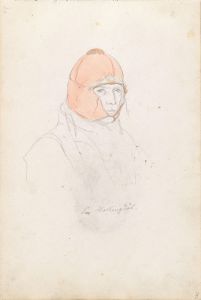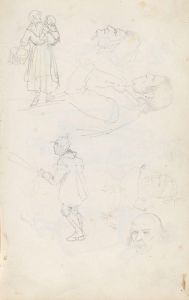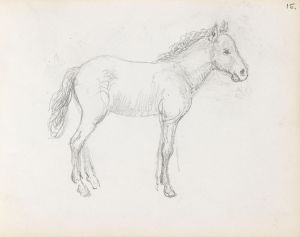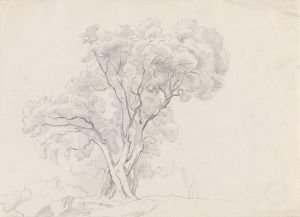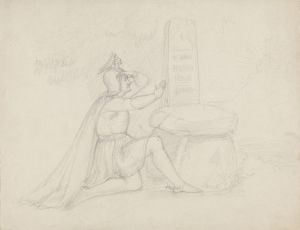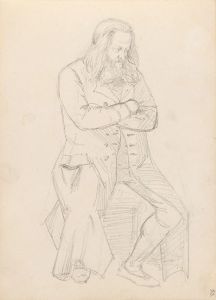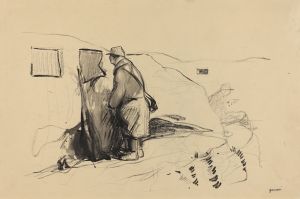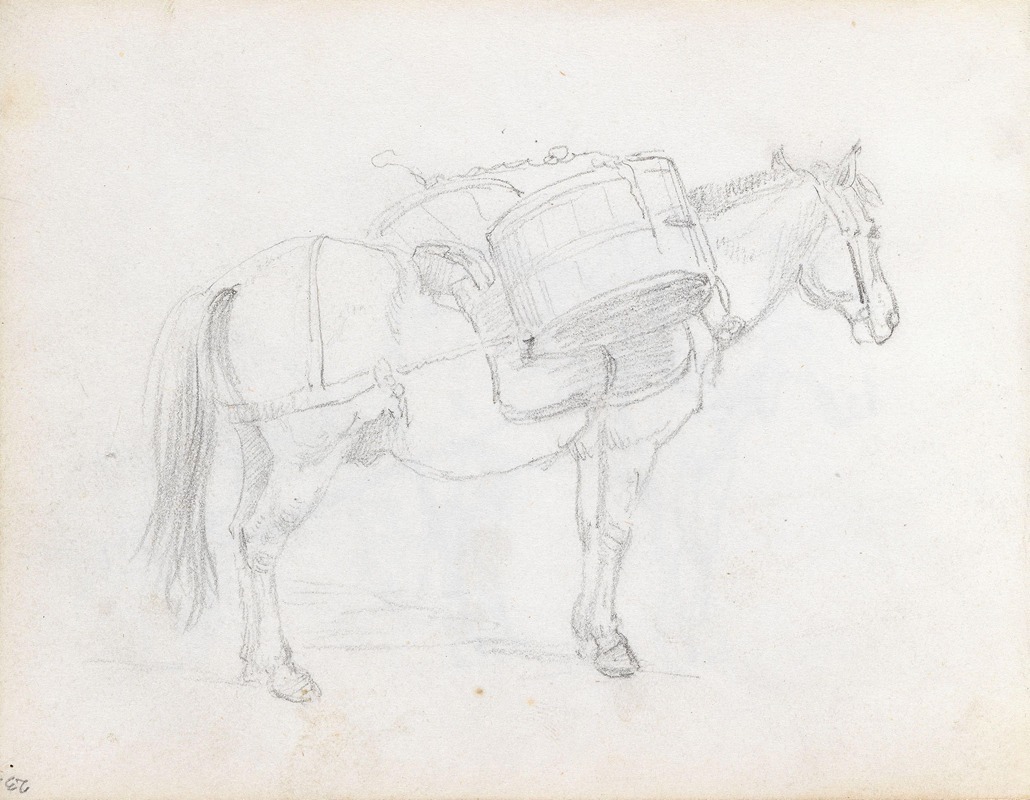
Pakkhest
A hand-painted replica of Adolph Tidemand’s masterpiece Pakkhest, meticulously crafted by professional artists to capture the true essence of the original. Each piece is created with museum-quality canvas and rare mineral pigments, carefully painted by experienced artists with delicate brushstrokes and rich, layered colors to perfectly recreate the texture of the original artwork. Unlike machine-printed reproductions, this hand-painted version brings the painting to life, infused with the artist’s emotions and skill in every stroke. Whether for personal collection or home decoration, it instantly elevates the artistic atmosphere of any space.
Adolph Tidemand's painting "Pakkhest" (translated as "Packhorse") is a work by the renowned Norwegian artist, who is celebrated for his contributions to the Romantic Nationalism movement in 19th-century Norway. Tidemand, born in 1814 in Mandal, Norway, is best known for his depictions of Norwegian rural life, traditions, and landscapes, which played a significant role in shaping the national identity during a period of cultural awakening.
"Pakkhest" is one of Tidemand's many works that reflect his interest in the everyday lives of Norwegian people. The painting portrays a packhorse, a common sight in rural Norway during the 19th century, used for transporting goods across the rugged terrain of the country. Horses were essential to the agrarian lifestyle of the time, and Tidemand's depiction captures the utilitarian role of these animals in a way that also conveys a sense of dignity and respect for their labor.
The painting is executed in Tidemand's characteristic style, which combines realism with a Romantic sensibility. His attention to detail is evident in the careful rendering of the horse's form and the surrounding environment. The composition likely reflects Tidemand's deep engagement with Norwegian culture and his desire to document and preserve the traditions of his homeland.
Adolph Tidemand often traveled throughout Norway to study and sketch rural life, and his works are informed by these firsthand observations. His ability to capture the essence of Norwegian culture earned him widespread acclaim during his lifetime, and his paintings remain significant in the history of Norwegian art.
While specific details about the creation date or current location of "Pakkhest" are not readily available, Tidemand's oeuvre is well-documented, and many of his works are housed in prominent institutions such as the National Museum of Art, Architecture and Design in Oslo. His collaboration with landscape painter Hans Gude on works like "Bridal Procession on the Hardangerfjord" further cemented his reputation as a leading figure in Norwegian art.
As with many of Tidemand's works, "Pakkhest" serves as a visual record of a bygone era, offering insight into the daily lives and cultural practices of 19th-century Norway. Through his art, Tidemand contributed to the preservation and celebration of Norwegian heritage, making his works enduring symbols of national pride.






